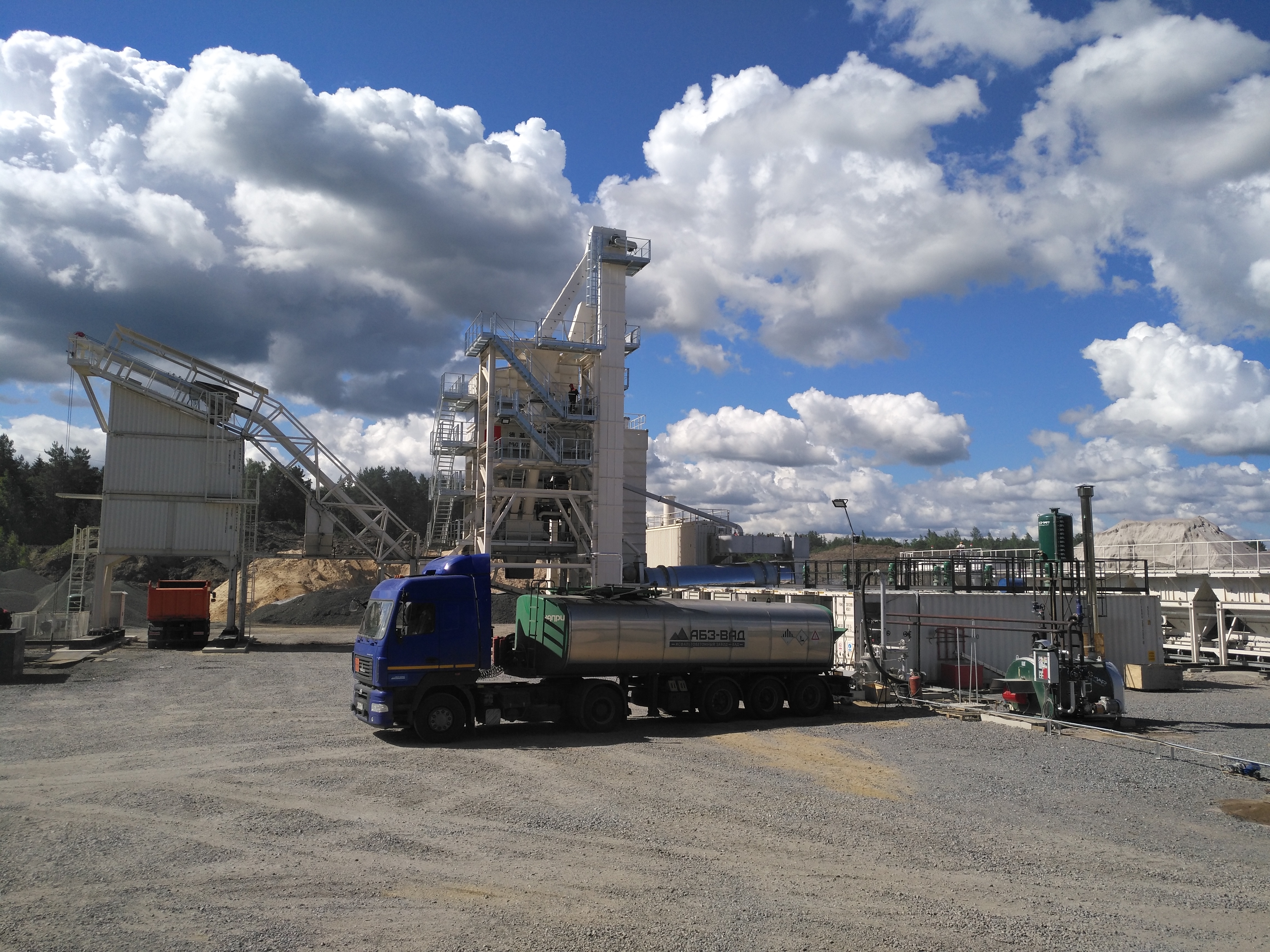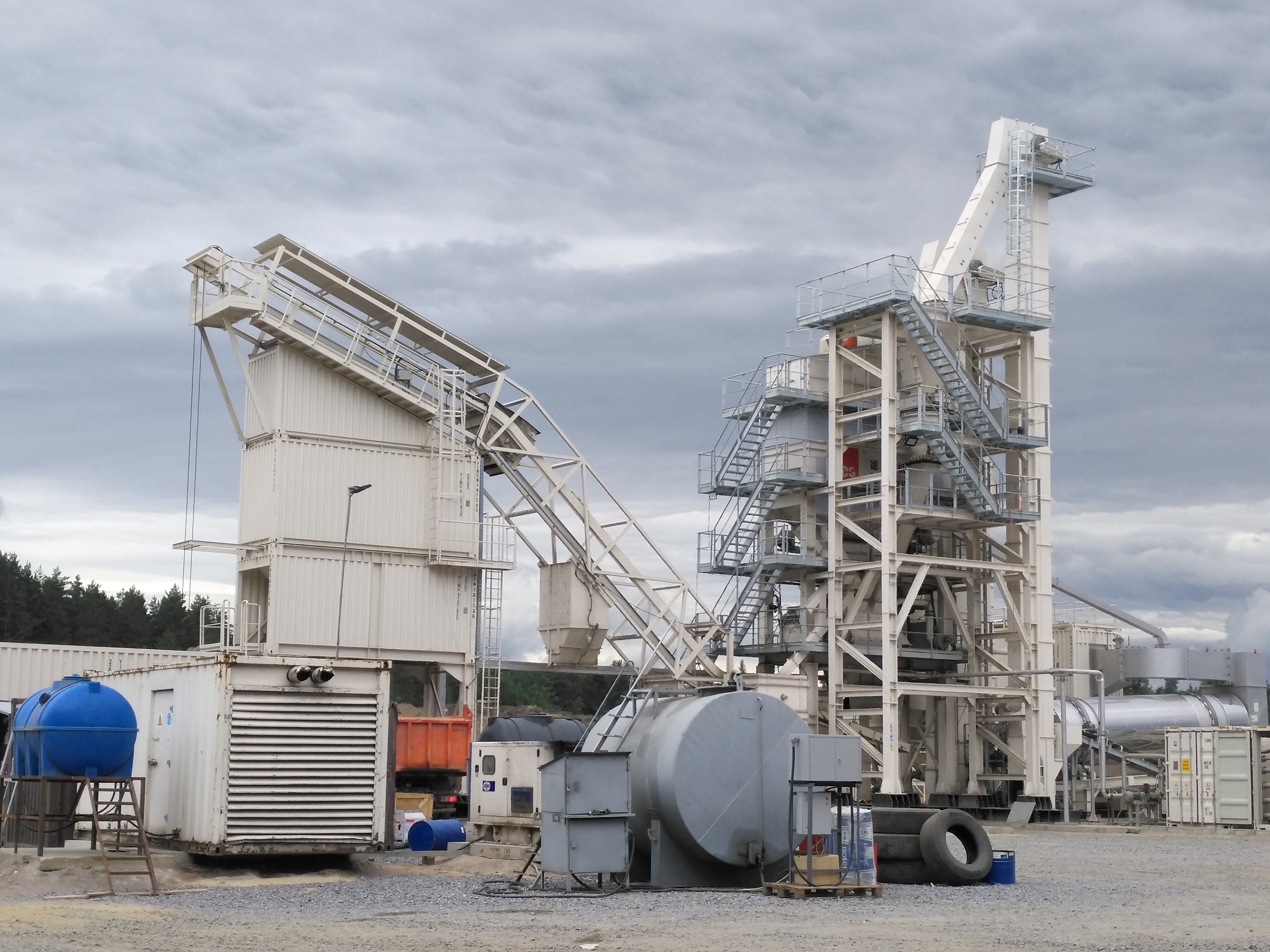The Win-win Approach of RAP Added to Mixer
At a construction site of an asphalt mixing plant in St. Petersburg, Russia, an operator presses a button, and a batch of room-temperature Reclaimed Asphalt Pavement (RAP) is directly fed into a 250°C mixer via the cold feeding system. Behind this seemingly routine operation lies an upgrade in Russia's road construction industry—the cold feeding technology, which enables 25% RAP addition, is reshaping the ecological and economic landscape of this traditional sector. This process innovation not only achieves resource recycling but also brings significant economic benefits, providing a sustainable solution for infrastructure construction.

D&G Machinery Customer's Job Site with RAP Added to Mixer System

D&G Machinery Customer's Job Site with RAP Added to Mixer System
1. Economic Benefits: A New Industry Paradigm to Lower Costs and Increase Efficiency
Compared with conventional equipment, the technology of directly feeding 25% RAP into the mixer features dramatic cost advantages. In Russian road construction projects, construction companies adopting this technology have enjoyed material cost savings. Specifically, for every ton of asphalt mixture produced, the technology reduces the use of new aggregates by 25%, thereby cutting procurement costs for stone materials. It also mitigates bitumen aging caused by hot recycling, cutting approximately 0.5% bitumen supplement.
Additionally, the technology’s promotional value
lies in its equipment adaptability. According to surveys, over 90% batch-type
asphalt mixing plants can directly apply “the RAP adding to mixer” process by
simply installing a set of precise metering system. The investment payback is
usually 6 to 8 months. This “light asset” retrofitting model greatly lowers the
threshold for enterprise transition.
2. Environmental Benefits: A Proper Answer to Resource Recycling
From a life-cycle assessment perspective, the technology of directly feeding 15%-25% RAP into the mixer has delivered outstanding ecological results. Data shows that for every ton of recycled material used, 1.1 tons of stone aggregates can be reduced, 30 kg of bitumen can be saved, and 48 kg of CO₂ emissions are cut. Based on the conditions of road construction in China with 15% RAP addition, each kilometer of a two-way, four-lane highway can consume approximately 1,350 tons of waste asphalt mixture, equivalent to cutting 64.8 tons of CO₂ emissions and saving 40.5 tons of petroleum bitumen. If all waste materials from nationwide asphalt pavement maintenance are recycled at this ratio, the annual emission reduction would exceed 2 million tons, equivalent to the annual carbon sequestration of 110 million trees.
This technology also addresses the environmental challenges facing traditional hot recycling processes. Tests show that the cold feeding process can reduce volatile organic compounds (VOCs) emissions by 37%, and particulate matter emissions by 42%, which effectively preventing the aging problem caused by RAP reheating.
3. Precise Metering System: Ensuring the Perfect Match for 25% RAP Addition
The core strength of D&G Machinery lies in its self-developed high-precision cold feeding system:
●The RAP scale is equipped with 3-point load cell that ensures accurate dosing.
●The door opening of each RAP bin is controlled by cylinders, achieving quick response within 0.5 sec.
In Russian road projects, this system ensures the stability of asphalt mixture after RAP addition, achieving precise control that guarantees optimal performance for each batch. It effectively resolves common problems in traditional equipment, such as RAP agglomeration or uneven distribution after using RAP.
From a global perspective, China has leaped from being a follower to a parallel leader in the field of RAP cold feeding and recycling. China’s practice in RAP cold feeding technology provides an effective solution to other countries, proving that environmental protection and economic development are never an “either-or” question. When black asphalt meets green concept, the result is not only high-quality road materials but also a clear path toward sustainable development. As China’s "dual-carbon" strategy deepens, this resource-recycling and eco-friendly technology will become the “new normal” in infrastructure, laying a solid ecological foundation for the construction of beautiful roads.
